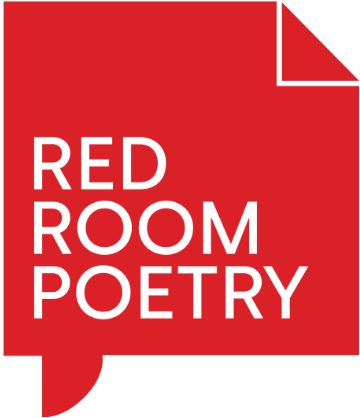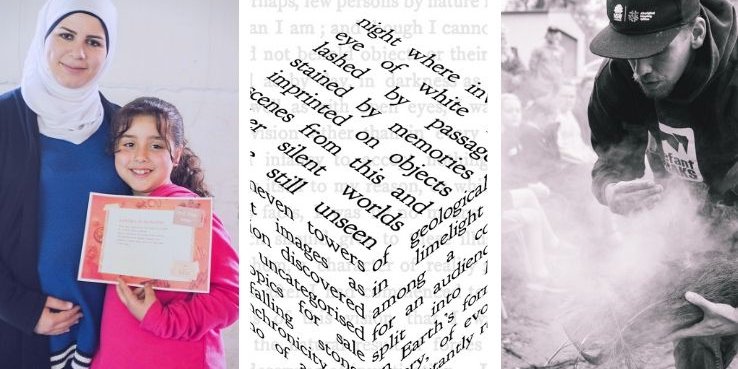New Connections, Urgent Purposes: Poetry in Meaningful Ways
Poetry is a border-crossing genre. It can take us to distant places, show us times long past, or speak in languages unfamiliar to our daily lives. It can teach us culture and imagine the future. Poetry is a tool for reaching across in empathy, for reaching within ourselves in order to express. Yet it’s a humble art form that can be practiced almost anywhere, with nothing more sophisticated than paper and pencil.
I had the recent pleasure of travelling to Hobart for the Crossing Borders conference, to present two workshops as a representative of Red Room Poetry (RR). One workshop focused on Poems to Share II, a new print and digital resource published by RR and AATE, featuring poems and curriculum-aligned learning sequences. This paper explores and reflects on the other session: ‘New Connections, Urgent Purposes’.
We opened the session by reading a poem by Jana, a Year 3 student from NSW.
A picture of my brother
It is sad. Like flower in winter it is white
it is blue. Like a cloudy
sky in my heart. It breaks when I see it.
It reminds me of Egypt, friends, hot
weather, prayer mats. He is so cute like
a red rose.
This poem was awarded First Place (Primary) in last year’s Poetry Object, the free competition for students and teachers that I produce for RR (registered teachers receive a free curriculum-aligned learning resource). Jana’s poem was selected from over 2,500 entries across Australia and New Zealand.
The teachers in the conference workshop had a moment to let this poem sink into their imaginations. We discussed the use of analepsis and the sense of time passing; the brave and curious line breaks; the striking effect of romantic imagery (a red rose) being recast in a familial context. With poetry, we often get profound experiences when we let words drop ripples of meaning and mystery; or in other words, when we read ‘forensically’ (to appropriate a term coined by teacher Rosie Kerin that describes searching for textual clues in close group work).
We discussed the role of literacy and its place within teaching history and culture, looking specifically at my colleague Kirli Saunders’ project, Poetry in First Languages (PIFL). The project celebrates, shares and preserves knowledge of First Nations languages and culture through poetry, music, dance and art, in connection with Elders and Language Custodians. We spoke about how poetry can reveal to us stories that aren’t on the main record; and how it can expose the highly colonised space of the educational system itself.
As part of PIFL, Gumea Dharawal poet Joel Deaves wrote ‘Banggang Cūndū (Old Tree)’ in his ancestral language. The poem is printed below and also published here, alongside an English translation and an audio recording that was made on Gumea Dharawal country with Joel’s fellow language custodians Jacob Morris and Adrian Webster.
Banggang Cūndū (Old Tree)
Nandhirra ngundāmurrajāng ngala walbūgging ngia
Nandhirra ngundāmurrajāng ngallaēnmarri māndijāngwūlunyun ngia
Ngaradha yanggamarri ngūranyaga ngia
Wadgamānya ngundāmurrajāng būlwūlpa galina
Ngaradha jerralali yagiabilla ngia
Būwnj ngurajāng dharundharung gilinya ngia
Nandhirra burungalaligū gūdjielalinya ngia
Nandhirra murrawal garangama ngūrajang ngia
Ngaradha bulwarinya ngia
Ngaradha būlmbillanya ngia
Būwnj dūgeri ngia
Nandhirra ngundāmurrajāng daranba djillnadjānnya ngia
Nandhirra ngundāmurrajāng būlwūlwiliabilla ngia
Nandhirra ngūrajāng dharandharung gillinya ngia
Thinking about how poetry can intersect with STEM and the creative arts, we looked at Benjamin Laird’s electronic poem ‘Psychometric Researches’ and Entang Wiharso’s installation piece Temple of hope: Door to Nirvana, both featured in the 2019 Poetry Object learning resource.
Laird, both a poet and a software developer, wrote and coded ‘Psychometric Researches’ as an interactive cube. Each face of the cube features a poem stanza, and the cube rotates as directed by the viewer, allowing you to read the stanzas in any order, including across two faces at once, essentially linking lines together across the cube’s edge.
Wiharso’s installation piece is currently on display at the National Gallery of Australia (Canberra). In special workshops to be held at the gallery later this year, RR will invite students to explore the installation and its references to the Javanese art of wayang kulit (a form of shadow puppetry). The artist’s question when creating this piece was whether the world could be more peaceful, harmonious and tolerant of difference. We encourage students and teachers alike to answer that question in their own way, using poetry or fine arts or a combination of both.
Towards the end of the Crossing Borders workshop, teachers chose an object that held special significance to them and imagined how a museum curator would write about this object in 100 years’ time, when the objects’ original functions had faded. What would a curator be able to glean or guess about the owner’s daily life, based on these objects? How are these objects a part of a broader historical story? One teacher spoke about her wedding ring, inherited from an ancestor and destined to be passed down through the family. She marvelled on the shifting understandings of marriage across time and wondered whether the ring would carry the same resonance for future wearers who did not know its original owner.
We spoke about how those who are gone carry on, immortal, in the stories we tell about them; and in the poems we write.
This notion of history and emotional context is at the heart of Poetry Object, and certainly a layered understanding was evoked by Jana through her prize-winning poem that opened the workshop. Although Jana’s brother is no longer with us, I am pleased to report that she has recently welcomed a new baby sibling into her life, and has already written a suite of poems in her honour.
From STEM workshops to storytelling in first languages, it is Red Room Poetry’s hope that our learning programs spark creativity by forging new connections and engaging with many kinds of border-crossing. By actively engaging students in personal poetic storytelling we aim to help young people explore their identities and improve their creative engagement, while fostering empathy and cultural awareness in learning environments.
This article was originally published in the June issue of EduTATE magazine.
About the author
Emma Rose Smith is a poet, educator and project producer at Red Room Poetry (RR), the not-for-profit making poetry a meaningful part of everyday life. Emma produces RR’s Poetry Object, Australasia’s largest poetry-writing competition for young people and teachers, reaching over 180 school communities and 2600 students and teachers annually.
Images:
- Jana and her mother receive the Poetry Object prize in December 2018. Photo by Nicola Bailey.
- A screenshot of ‘Psychometric Researches’ by Benjamin Laird.
- Poetry in First Languages workshops on Gundungurra country. Photo by Tad Souden.
Poems originally published by Red Room Poetry. All copyright belongs to poem authors.

